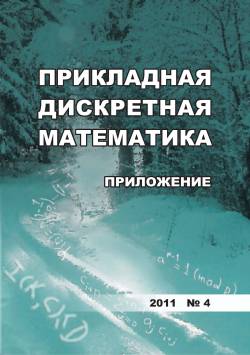Identification method for invert-ible finite state machine with known output function
This paper presents some simple adaptive identification experiments with a finite state machine (FSM) A = (X, S, Y, taken from an exclusive class of invertible strongly connected deterministic FSM specified by a nondeterministic FSM R = (X, S, Y, Ф,^) with one or two transition variants. In R, a set S1 is a x/y-successor of a subset So С S if S1 = {s : 3s0 E S0 (s E & <^(x, s0) = y)}. A successor graph of the FSM R is an oriented graph constructed in the following way. Each non-empty subset S0 С S is represented by a node v(S0) of the graph. A node v(S0) is an end vertex if |S0| ^ 2. If a node v(S0) is not an end vertex, then there exists an edge labelled by x/y from this node to a node v(S1), where S1 is the x/y-successor of S0. A node v(S0) is decidable if it is an end vertex or there exists x0 such that all edges x0/y direct to decidable nodes. It is proved that if the node v(S) of the successor graph of the FSM R is decidable, then there exists a simple adaptive homing experiment with A. This fact results in the following method for identification of A. First, construct the successor graph of R and find the decidable nodes in it. Second, if the node v(S) is decidable, then carry out a simple adaptive homing experiment with A. At last, execute an identification experiment with A when the initial state of A is known. Methods for producing homing experiments and identification experiments with the initial FSM of an exclusive class are well known.
Keywords
простой условный эксперимент по идентификации автомата, сильносвязный автомат, обратимый автомат, finite state machines, successor graphs, identification experimentsAuthors
| Name | Organization | |
| Zhukovskaja A. O. | Tomsk State University | zhuka157@yandex.ru |
| Trenkaev V.N. | Tomsk State University | tvnik@sibmail.com |
References
